Manaslu Circuit Trek – 14 Days of Remote Himalayan Adventure in Nepal
Embark on the unforgettable Manaslu Circuit Trek, a 16-day Himalayan adventure that winds through Nepal’s remote and culturally rich Gorkha region. This epic high-altitude trek in Nepal circles the eighth-highest mountain in the world — Mount Manaslu (8,163m) — and offers an off-the-beaten-path alternative to the more commercialized routes like the Annapurna Circuit. Located near the Tibetan border, the Manaslu region trek introduces you to dramatic mountain landscapes, preserved Tibetan Buddhist culture, and ever-changing terrain. From lush subtropical forests to snow-covered alpine passes, this trekking experience in Nepal is perfect for those seeking both raw natural beauty and cultural immersion — without the crowds.
The Manaslu Circuit Trek is a richly immersive journey through some of the most breathtaking and untouched regions of the Nepalese Himalayas. As you begin your ascent from the low-lying green hills of Soti Khola, the trail gradually transitions through subtropical forests, deep river gorges, terraced farmlands, and traditional Gurung and Tibetan villages. The path hugs the thundering Budhi Gandaki River, leading trekkers to higher elevations where snowy ridgelines and towering peaks dominate the horizon. The landscapes constantly shift with altitude — from lush bamboo groves and waterfalls in the lower region to icy moraines, glacial lakes, and alpine deserts near the high passes.
Reaching a maximum elevation of 5,106 meters at Larkya La Pass, this trek rewards adventurers with awe-inspiring panoramas of Mount Manaslu (8,163m) — the eighth-highest mountain in the world — along with striking views of Himlung Himal, Cheo Himal, and Annapurna II. The ascent to Larkya La is a highlight in itself, both physically demanding and emotionally uplifting, as it opens up an expansive Himalayan vista that few ever witness. Along the way, you’ll encounter remote monasteries, colorful prayer flags fluttering in the wind, and ancient mani walls carved with Buddhist chants — each moment adding depth to your connection with the mountains. The Manaslu Conservation Area not only protects rare wildlife like snow leopards and blue sheep but also shelters some of Nepal’s most authentic cultural experiences, untouched by mass tourism. This trek is perfect for those seeking rugged natural beauty, cultural insight, and a deeper sense of Himalayan solitude.
The Manaslu Circuit Trek offers an extraordinary passage through Nepal’s rich ecological zones, showcasing a remarkable diversity of flora and fauna. Starting from the sub-tropical forests of Soti Khola, trekkers ascend through lush lowland jungles filled with sal trees, bamboo groves, and alder woods, transitioning into temperate oak and pine forests as you climb higher. In spring, the trails near Deng and Namrung are ablaze with blooming rhododendron forests, Nepal’s national flower, painting the valleys in shades of red, pink, and white.
As you enter the Manaslu Conservation Area, the trail unveils a sanctuary of rare Himalayan wildlife. If you’re lucky, you may spot Himalayan tahr, langurs, musk deer, and colorful birds like Himalayan monals and blood pheasants. Higher up, near Sama Gaun and Samdo, the landscape shifts to alpine meadows and glacial terrain where blue sheep graze and elusive species like the snow leopard silently roam. The shifting vegetation zones, from tropical river valleys to high-altitude alpine deserts, make this trek a haven of eco-diversity and one of the best routes for nature lovers and wildlife photographers. Each major stopover introduces a new ecological setting, enhancing the overall richness of this Himalayan adventure.
🗺️ Manaslu Circuit Trek Route Overview – A Remote Himalayan Loop
The Manaslu Circuit Trek is one of Nepal’s most breathtaking and culturally rich trekking routes, offering a diverse journey around the majestic Mount Manaslu (8,163m), the world’s eighth-highest peak. This spectacular trek typically begins with a scenic drive from Kathmandu to Soti Khola (700m), marking the gateway to the remote Manaslu region. From here, trekkers follow the winding Budhi Gandaki River, gradually ascending through subtropical forests and picturesque villages such as Machha Khola, Jagat, and Deng. These early stages involve daily hikes of around 6–7 hours, featuring moderate elevation gains and lush terrain.
As you climb higher, the trail leads through Namrung and Lho, where Tibetan Buddhist culture becomes prominent. Intricately carved mani walls, prayer wheels, and ancient monasteries line the paths, offering a deep cultural immersion. The village of Sama Gaun (3,530m) is a key acclimatization stop, nestled in a scenic alpine bowl with panoramic views of Manaslu, Himalchuli, and Peak 29. Here, trekkers can enjoy a side hike to Manaslu Base Camp or the tranquil Pungyen Gompa, adding an extra layer of adventure and altitude readiness.
From Sama Gaun, the trail continues to Samdo (3,875m) and Dharamsala (also known as Larkya Phedi at 4,460m), where the alpine environment becomes stark and glaciated. The most physically demanding yet rewarding day of the trek is the crossing of the Larkya La Pass (5,160m)—a high-altitude traverse that delivers jaw-dropping views of Cheo Himal, Himlung Himal, and Annapurna II. The descent begins into the Marsyangdi Valley, reaching Bimtang, where grassy meadows and glacial rivers offer a stunning contrast to the barren high pass.
The final stretch passes through Tilije, Dharapani, and eventually joins the popular Annapurna Circuit trail, concluding with a drive back to Kathmandu via Besisahar. In total, the Manaslu Circuit Trek spans about 14 to 18 days, covering altitudes from 700m to over 5,100m. Its blend of physical challenge, cultural encounters, and dramatic scenery makes it one of the best off-the-beaten-path treks in Nepal.
🌟 Top Highlights of the Manaslu Circuit Trek – 14 Days
The Manaslu Circuit Trek is a thrilling journey through some of Nepal’s most remote and majestic landscapes. This trek combines challenging high-altitude passes, rich cultural experiences, and diverse ecosystems, all centered around the towering Mount Manaslu (8,163m). Trekkers can expect stunning panoramic mountain views, encounters with unique Himalayan wildlife, and authentic Tibetan Buddhist villages, making this a truly unforgettable adventure in the heart of the Himalayas. Here are the top highlights that set this trek apart:
- Trek the spectacular Manaslu Circuit, a remote and less-crowded Himalayan route around the 8,163m Mount Manaslu, the world’s eighth-highest peak.
- Cross the challenging Larkya La Pass (5,160m), offering breathtaking panoramic views of surrounding peaks like Himlung Himal and Annapurna II.
- Experience authentic Tibetan Buddhist culture in traditional villages such as Namrung, Sama Gaun, and Samdo, with visits to ancient monasteries and mani walls.
- Walk through diverse vegetation zones, from lush subtropical forests along the Budhi Gandaki River to alpine meadows and glacial landscapes near the high passes.
- Spot rare Himalayan wildlife including snow leopards, blue sheep, and Himalayan monals within the pristine Manaslu Conservation Area.
- Enjoy the thrilling ascent to Manaslu Base Camp, surrounded by stunning views of glaciated peaks and rugged mountain terrain.
- Stay in rustic teahouses and lodges that offer a warm cultural experience alongside traditional Nepalese hospitality.
- Witness spectacular rhododendron blooms in spring and crisp clear skies in autumn, perfect for photography and mountain views.
- Traverse ancient trails with fewer crowds, providing a deep sense of wilderness and solitude in the heart of Nepal’s Himalayas.
🌤️ Best Seasons to Trek the Manaslu Circuit – Climate, Conditions & What to Expect
The best time to trek the Manaslu Circuit is during the pre-monsoon (spring) and post-monsoon (autumn) seasons, when weather conditions are most favorable for high-altitude trekking in Nepal. From March to May, spring breathes life into the trail with blooming rhododendron forests, clear skies, and moderate temperatures ranging from 10°C to 20°C in the lower regions, making it ideal for trekking and photography. Wildlife is also more active during this period, enhancing the experience of Nepal’s diverse flora and fauna.
The autumn season (September to November) is equally popular due to stable weather, excellent visibility, and mild temperatures. Crisp air and blue skies allow for spectacular panoramic views of Mount Manaslu (8,163m) and surrounding peaks. Trail accessibility is at its peak, and conditions are perfect for crossing high passes like the Larkya La Pass (5,160m) safely.
While the monsoon season (June to August) brings heavy rainfall and slippery trails, trekking during this time is less common but possible for experienced adventurers prepared for muddy paths and leeches in lower forests. The lush greenery and fewer crowds are definite pluses, though cloud cover often obscures mountain views.
Winter (December to February) sees cold temperatures and snow accumulation, especially above 3,500 meters, making the trek challenging and often requiring technical gear for snow and ice. However, it also offers solitude and a unique, pristine landscape for those prepared for harsh conditions.
In summary, for most trekkers, spring and autumn remain the safest and most rewarding seasons for the Manaslu Circuit, combining pleasant weather, vibrant natural beauty, and excellent trail conditions.
🍽️ Food & Accommodation on the Manaslu Circuit Trek – What to Expect
Along the Manaslu Circuit Trek, trekkers stay primarily in traditional teahouses and lodges, offering a warm respite after long days on the trail. These teahouse trekking options in Nepal vary from simple rustic homes to well-maintained lodges, especially in larger villages like Namrung, Sama Gaun, and Samdo. Accommodations typically provide basic but comfortable rooms with shared or private bathrooms, and many have common dining areas with cozy wood or gas stoves to keep guests warm.
Food options on the Manaslu trek are a satisfying mix of local Nepali dishes and familiar international meals, catering to different tastes and dietary needs. You can expect hearty staples like dal bhat (lentil soup with rice), momos (Tibetan dumplings), noodles, and vegetable curries, alongside simple Western-style dishes such as pasta, omelets, and soups. Tea, coffee, and hot drinks are widely available to help you recharge after cold mornings and challenging climbs.
Hygiene standards on the route have improved significantly in recent years, especially at popular stops, but trekkers should still carry their own hand sanitizer and toilet paper for convenience. At higher altitudes above 4,000 meters, lodges become more basic, with limited hot water and electricity often available only via solar power during evening hours.
Overall, the lodging options on the Manaslu Circuit Trek balance comfort with authentic mountain hospitality, allowing trekkers to experience Nepalese culture up close while resting comfortably. Booking in advance during peak seasons is recommended to secure preferred accommodations, especially in smaller villages where options are limited.
🛂 Trekking Permits & Regulations for the Manaslu Circuit Trek
Before setting out on the Manaslu Circuit Trek, obtaining the necessary trekking permits is essential to comply with Nepal’s regulations and to help preserve the fragile environment of the region. Here’s a clear overview of all permits required, where to get them, and important details every trekker must know:
- Manaslu Restricted Area Permit (RAP):
The Manaslu region is a restricted area, and all trekkers must obtain the Manaslu Restricted Area Permit. This permit is issued by the Nepal Tourism Board (NTB) or authorized regional offices. It can be obtained in Kathmandu or at designated checkpoints such as Arughat Bazaar or Dumre before entering the restricted zone. The fee varies depending on the season: approximately $70 USD per week during peak season (September to November and March to May) and lower in off-peak months. - Trekker’s Information Management System (TIMS) Card:
In addition to the RAP, trekkers must carry a TIMS card, which serves as proof of registration and ensures trekkers’ safety on Nepal’s trails. TIMS can be obtained from the Nepal Tourism Board or authorized travel agencies in Kathmandu and Pokhara. The cost is generally $20 USD for individual trekkers. - Manaslu Conservation Area Permit:
The trek passes through the Manaslu Conservation Area (MCA), a protected zone dedicated to preserving local flora, fauna, and cultural heritage. Trekkers must pay a separate conservation area fee, usually included with the restricted area permit or paid at the conservation office in Soti Khola. This fee helps support local conservation efforts.
Important Regulations & Notes:
- Guide and Group Requirements: Trekkers entering the restricted Manaslu region must be accompanied by a registered local guide and porter as per Nepalese government regulations. This ensures safety, cultural respect, and adherence to local laws.
- Permit Checks: Police and permit officials conduct routine checks at several points along the trek, so always carry original permits and keep photocopies handy.
- Permit Validity: The RAP and TIMS are valid for a set duration (usually up to 1 month) but can be extended with proper authorization if your trek exceeds planned dates.
By securing these permits in advance, trekkers can enjoy a smooth, hassle-free experience exploring the spectacular and culturally rich Manaslu Circuit Trek. Always check for the latest updates on fees and regulations before your journey, as policies can change.
💪 Fitness Level & Trekking Difficulty for the Manaslu Circuit Trek
The Manaslu Circuit Trek is classified as a moderate to challenging high-altitude trek that demands a good level of fitness and stamina. Trekkers can expect daily walking distances ranging from 5 to 8 hours, covering varied terrain that includes steep ascents, rocky paths, river crossings, and occasional slippery or uneven trails. The maximum altitude reached is approximately 5,160 meters at the Larkya La Pass, requiring careful acclimatization to prevent altitude sickness.
Altitude is one of the biggest challenges on this trek. Proper acclimatization days are built into the itinerary, especially around villages like Sama Gaun and Samdo, to allow your body to adjust to thinning air and lower oxygen levels. Trekkers should be aware that physical symptoms such as headaches, nausea, or fatigue are common at these elevations, so gradual pacing and hydration are crucial.
To prepare for the fitness requirements of the Manaslu trek, regular cardiovascular training (like running, cycling, or swimming) combined with strength exercises focusing on legs, core, and endurance is highly recommended. Hiking practice with a loaded backpack will also help condition muscles for the prolonged trekking days. Mental preparation is equally important, as the trek’s remoteness demands resilience and adaptability.
While prior trekking experience is beneficial, dedicated beginners with proper training and a positive attitude can also complete the Manaslu Circuit. Hiring a knowledgeable guide and porter can ease physical strain and improve safety. Overall, the trek offers a rewarding challenge with spectacular natural beauty for those committed to proper fitness and preparation.
Want to elevate your trekking experience? Opt for the Luxury Manaslu Circuit Trek with Helicopter Return Expedition , where adventure meets comfort and stunning aerial views on your way back.
🧭Alternative Tours & Packages
- Annapurna Circuit Trek
A legendary Himalayan trek known for its diverse landscapes, dramatic mountain views, and cultural richness — circling the Annapurna massif through high passes and traditional villages. - Kanchenjunga Circuit Trek
A remote and challenging journey through the eastern Himalayas, this trek circles the world’s third-highest peak and immerses you in pristine landscapes and rich cultural diversity.









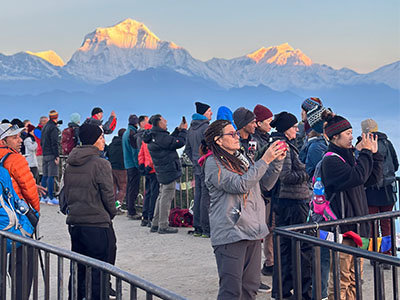
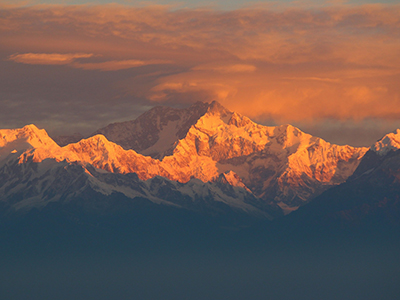
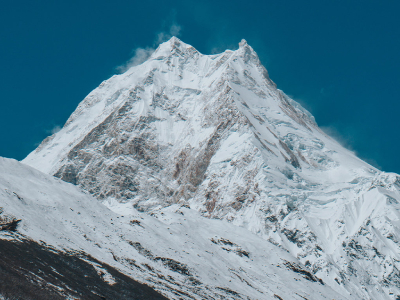
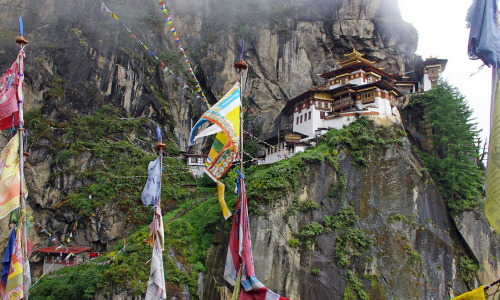
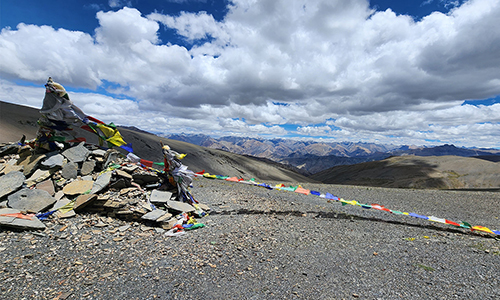
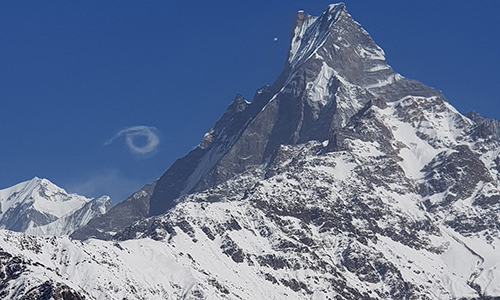
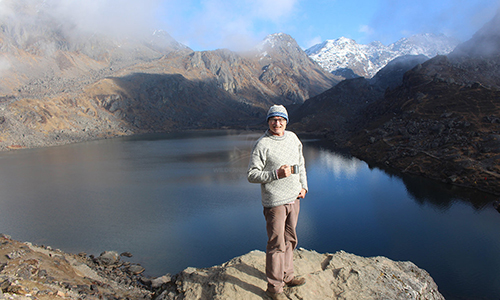



Amanda Richards
2025-06-15 17:44:47
The Manaslu Circuit Trek with Vyas Treks Nepal was one of the most incredible journeys I’ve ever taken. The route was peaceful, less crowded, and filled with stunning landscapes and charming villages. Our guide was exceptionally knowledgeable and supportive, and the whole team made us feel safe and welcomed throughout. Crossing the Larkya La Pass was tough but so rewarding! I highly recommend this trek to anyone looking for a mix of challenge and authentic Himalayan culture.